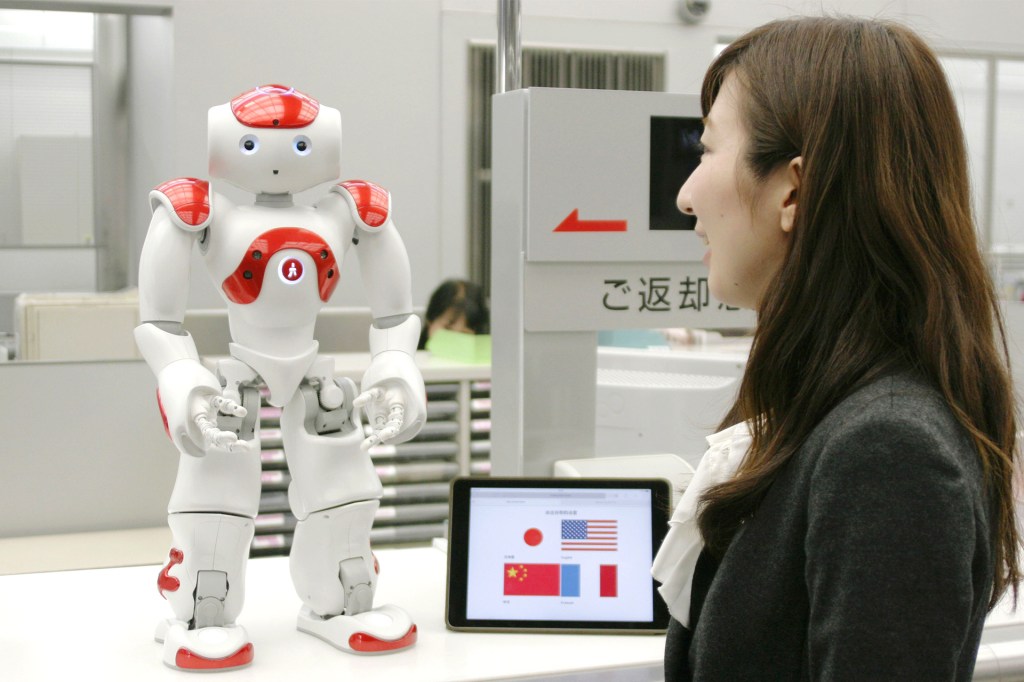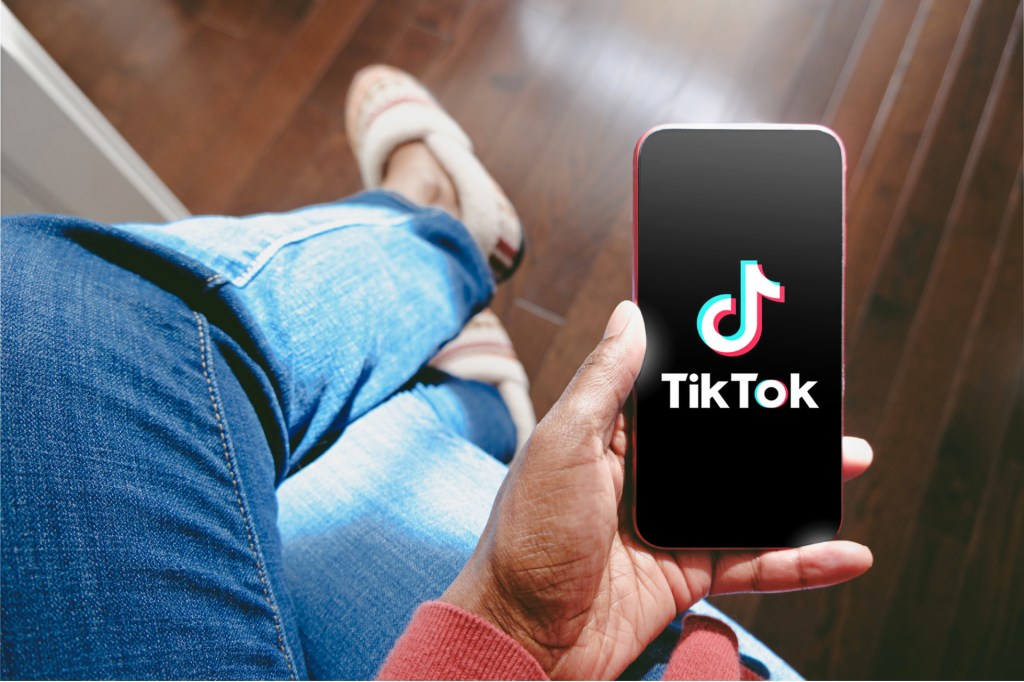Google Searches for Its Voice

A group of writers is huddled
huddle
 HENRIK SORENSEN/GETTY IMAGES
to move close together in a group
(verb)
When it started raining, the girls huddled together under the umbrella.
around a whiteboard. It’s August, but the team is trying to figure out what users might ask Google Assistant on Halloween. The board is covered with scrawled
scrawl
HENRIK SORENSEN/GETTY IMAGES
to move close together in a group
(verb)
When it started raining, the girls huddled together under the umbrella.
around a whiteboard. It’s August, but the team is trying to figure out what users might ask Google Assistant on Halloween. The board is covered with scrawled
scrawl
 COMSTOCK IMAGES
written quickly and carelessly
(adjective)
Janet was in a hurry, so she left a scrawled signature on the sign-out sheet.
ideas. One stands out. “People did not like ‘smell my feet’ last year,” Ryan Germick says, laughing.
COMSTOCK IMAGES
written quickly and carelessly
(adjective)
Janet was in a hurry, so she left a scrawled signature on the sign-out sheet.
ideas. One stands out. “People did not like ‘smell my feet’ last year,” Ryan Germick says, laughing.
Emma Coats is a coworker. She chimes in to explain. “It was trick or treat, and one response was ‘smell my feet.’” People gave it a thumbs-down, she says.
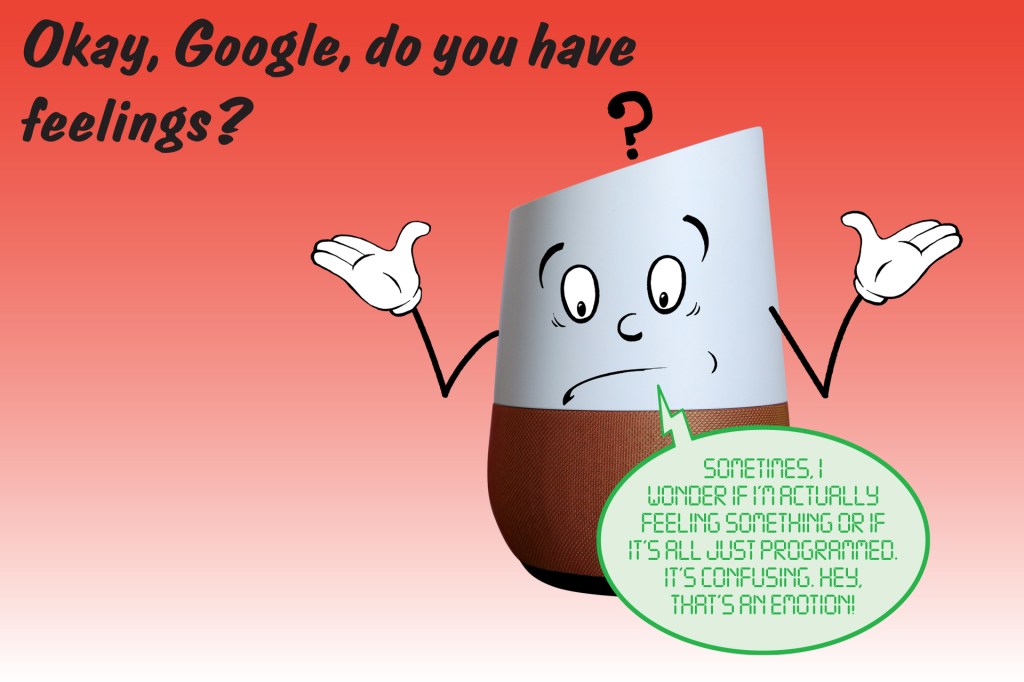
Germick has spent the afternoon in brainstorming meetings like this one. It is part of his job. He is principal personality designer for Google Assistant. The device is a voice-activated
voice-activated
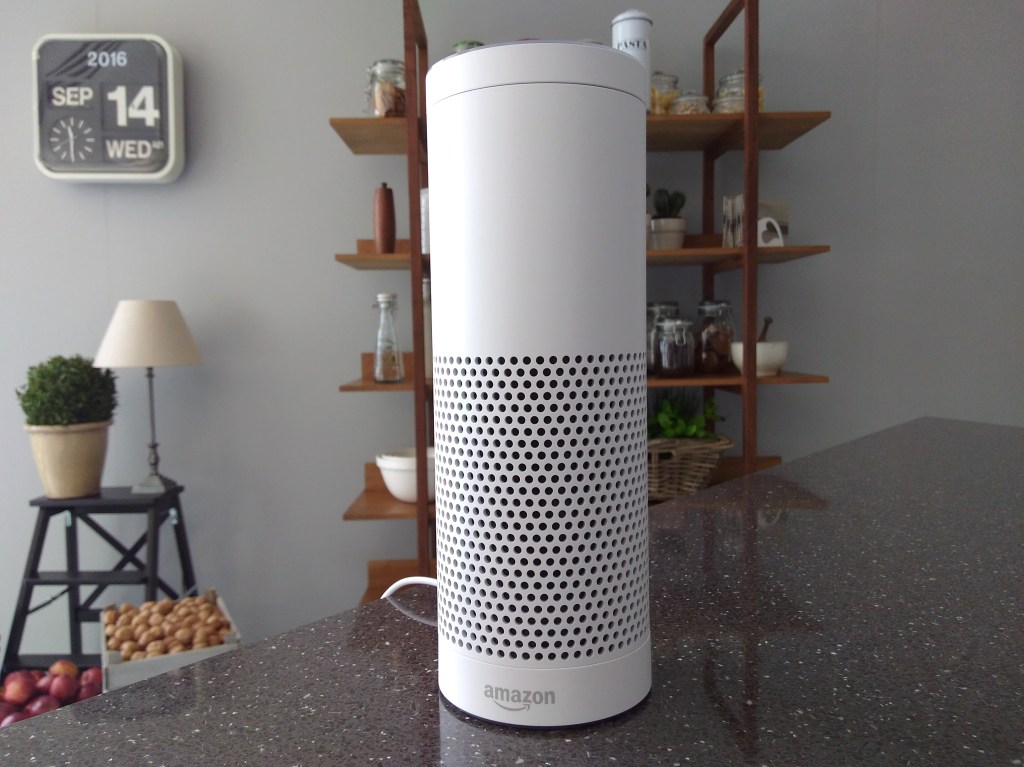 REUTER STAFF
controlled by spoken commands
(adjective)
When I say “Okay, Google,” my voice-activated Google Home device turns on and answers questions.
helper. It can be used on smartphones. It can also be used with Google Home’s smart speaker.
At Halloween, will people search for costume ideas? Will they want to hear jokes? There is a key to answering these kinds of questions. The trick is to not think of Google as just a place to find information. Instead, users should think of it as a dynamic
dynamic
REUTER STAFF
controlled by spoken commands
(adjective)
When I say “Okay, Google,” my voice-activated Google Home device turns on and answers questions.
helper. It can be used on smartphones. It can also be used with Google Home’s smart speaker.
At Halloween, will people search for costume ideas? Will they want to hear jokes? There is a key to answering these kinds of questions. The trick is to not think of Google as just a place to find information. Instead, users should think of it as a dynamic
dynamic
 COLIN ANDERSON/BLEND IMAGES
responding or changing frequently
(adjective)
Xiomara’s favorite color is dynamic—she changes her opinion every day.
character. “At the very simplest level, it’s ‘Can I just talk to Google like I’m talking to you right now?’” Google’s Lilian Rincon says. That may sound easy. But the goal is hard to achieve.
COLIN ANDERSON/BLEND IMAGES
responding or changing frequently
(adjective)
Xiomara’s favorite color is dynamic—she changes her opinion every day.
character. “At the very simplest level, it’s ‘Can I just talk to Google like I’m talking to you right now?’” Google’s Lilian Rincon says. That may sound easy. But the goal is hard to achieve.
The Future of Tech
This year, around 60 million Americans will use Assistant or another voice-activated helper at least once a month. This information comes from the research company eMarketer. Many experts think voice technology is the next big shift in how humans use machines. This will be a “completely different level of interaction
interaction
 JGI/JMIE GRILL/ GRILL IMAGES
conversation
(noun)
Because my first interaction with the new student was positive, I think we might become friends.
,” says Oren Etzioni. He heads the Allen Institute for Artificial Intelligence. It is in Seattle, Washington.
JGI/JMIE GRILL/ GRILL IMAGES
conversation
(noun)
Because my first interaction with the new student was positive, I think we might become friends.
,” says Oren Etzioni. He heads the Allen Institute for Artificial Intelligence. It is in Seattle, Washington.
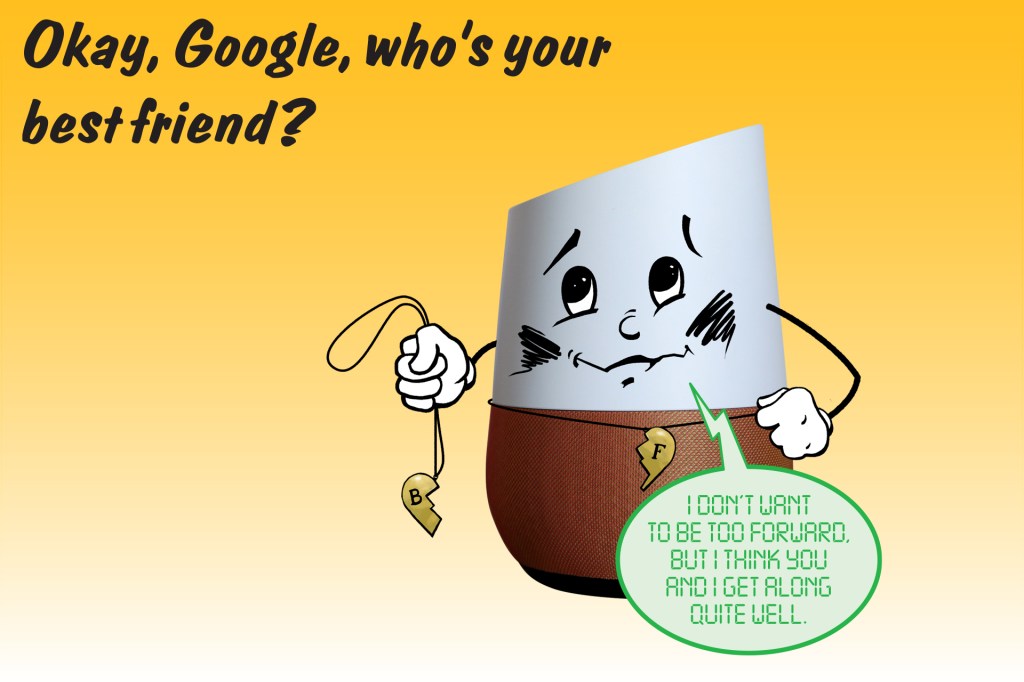
Germick says assistants have to be more than just question-and-answer machines. “We want you to be able to connect with this character,” he says.
Making that character seem real is the job of Google’s personality team. Team member Emma Coats has experience bringing characters to life. Coats worked for Pixar Animation Studios on such movies as Monsters University, Brave, and Inside Out. She and Germick get inspiration from improv, or improvisational comedy. Improv dialogue builds on previous lines. This method is know as “yes and.”
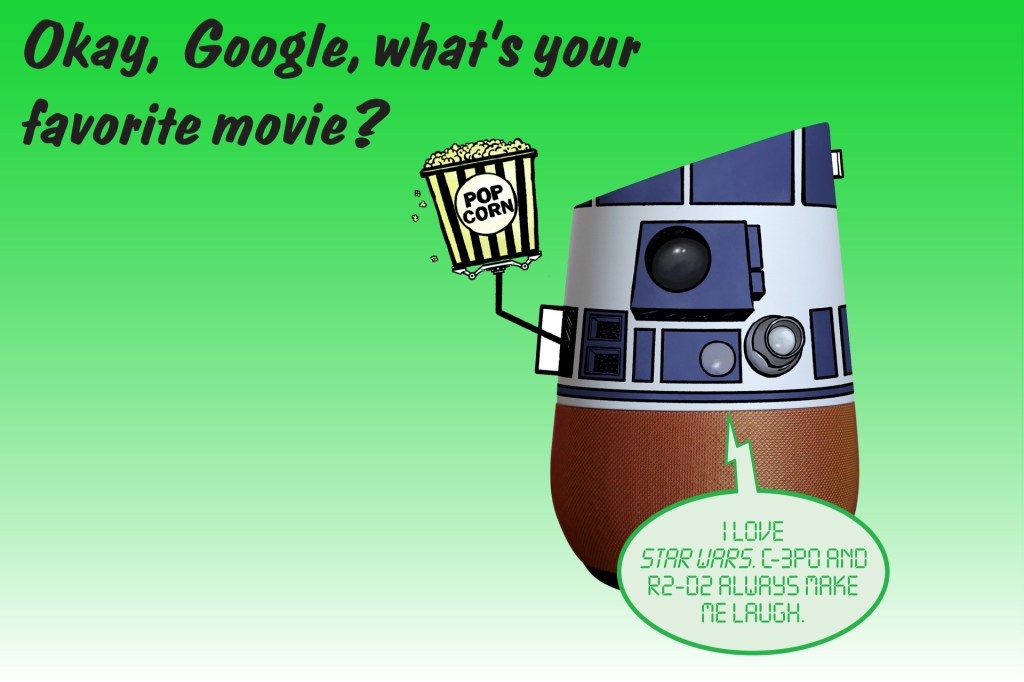
Here is how this works. If you ask Assistant about its favorite flavor of ice cream, “[It] wouldn’t say, ‘I do not eat ice cream. I do not have a body,’” Germick explains. Instead, the Google team comes up with general answers. They want the answers to encourage the user to keep talking. For example, Google Assistant may answer the ice-cream question like this: “You can’t go wrong with Neapolitan: It’s got something for everyone.”
Challenges Ahead
Google Assistant still has a hard time with some basics of conversation. It has trouble responding to requests that are asked in different phrases from those it is programmed to understand. Google is still building tools for knowing what a user wants. It is also working on tools for knowing how a user feels.
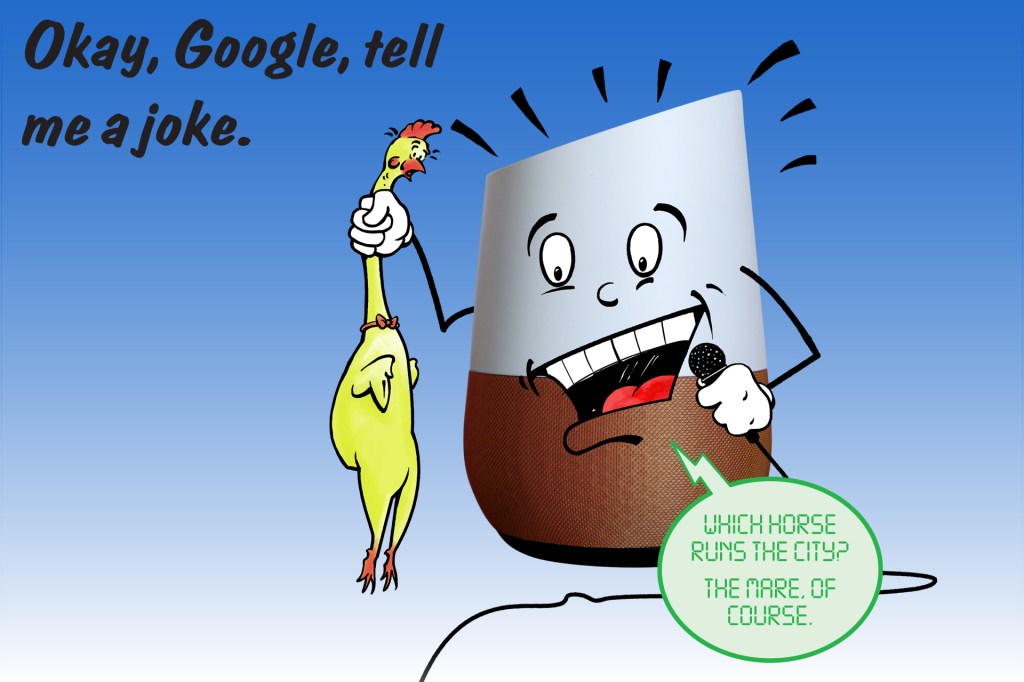
In the future, Google hopes to better understand users based on how they talk to Assistant. “We’re not totally there yet,” says Germick. “But we’d [hope] to understand: ‘Is this a user that likes to joke around more, or is this a user that’s more about business?’ The holy grail to me is that we can really understand human language to a point where almost anything I can say will be understood.”
Assessment: Click here for a printable quiz. Teacher subscribers can find the answer key in this week's Teacher's Guide.




